Must-Know Tips For Succulent Pots: What To Avoid And What Works Best
Selecting a pot or planter for succulents is often overlooked but it's an important part of keeping your succulents happy and creating a beautiful arrangement!
When it comes to succulents, the only thing I enjoy more than buying succulents is choosing the pottery to plant them in. I'm especially addicted to blue pots. My goal is to one day have two giant teal blue pots on my front porch, both filled with bright orange succulents. Sounds great right?
Don't just pick any planter
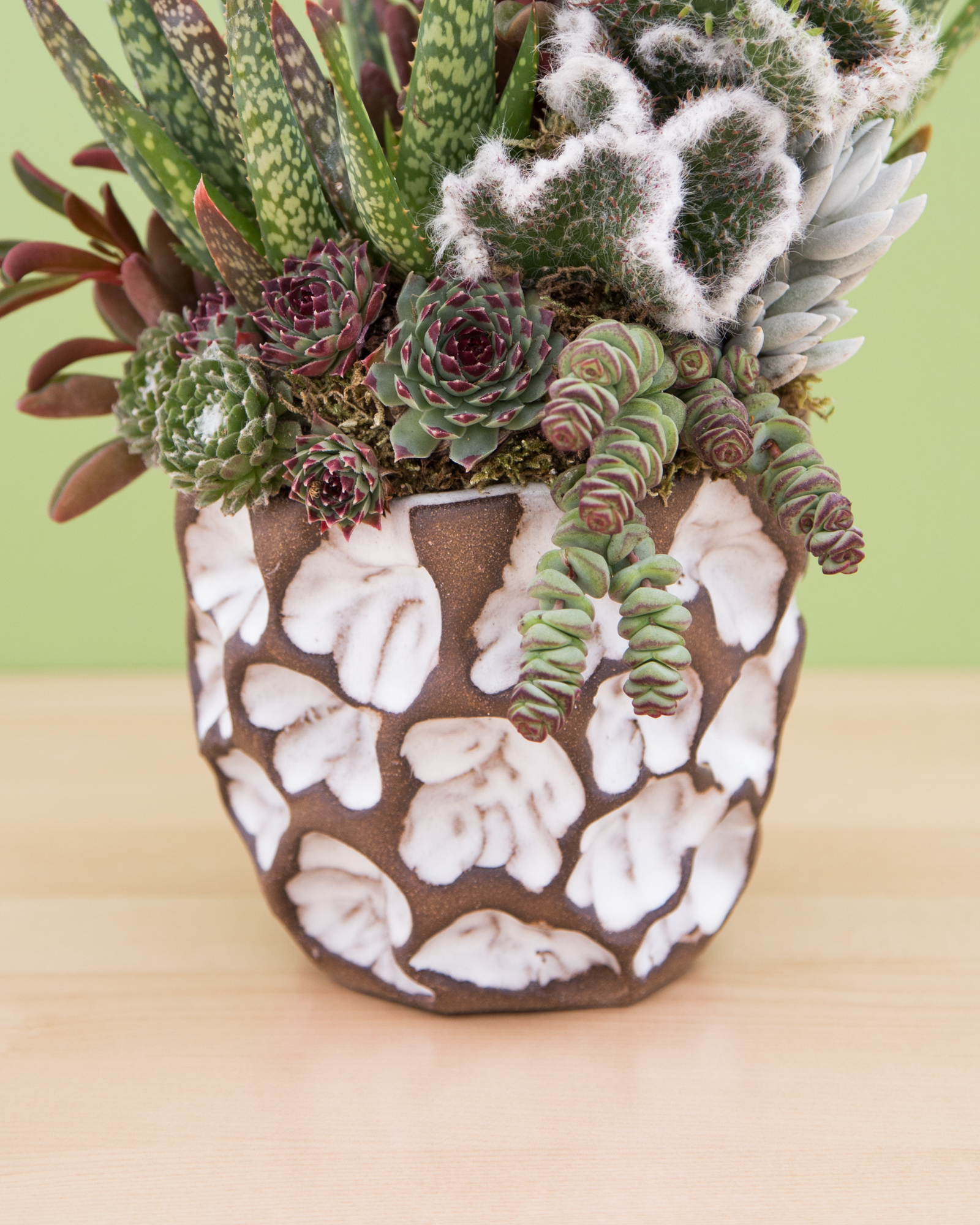
As much as I love buying pottery and planters for succulents, it can be a challenging task to find just the perfect one. Over the years, I've discovered a few things that are important to consider when choosing a pot, that many beginning succulent growers don't think of.
All of these factors can make a big difference in helping your succulents thrive.
Drainage!

Choose a pot with a drainage hole! If you come away from this post learning nothing else, remember to get a pot with a drainage hole.
Seriously... this will make your life so much easier, as it takes a lot of the guesswork out of watering succulents.
You can use mesh tape to cover the holes to keep the soil from falling out. Mesh screens are also another great option as they keep the soil in but allow the water to flow through easily.
As you become more comfortable with watering your succulents in a pot with a drainage hole, you can branch out and try some pots without drainage. But again — if you're just starting out with succulents, a drainage hole will make things much easier.
Material
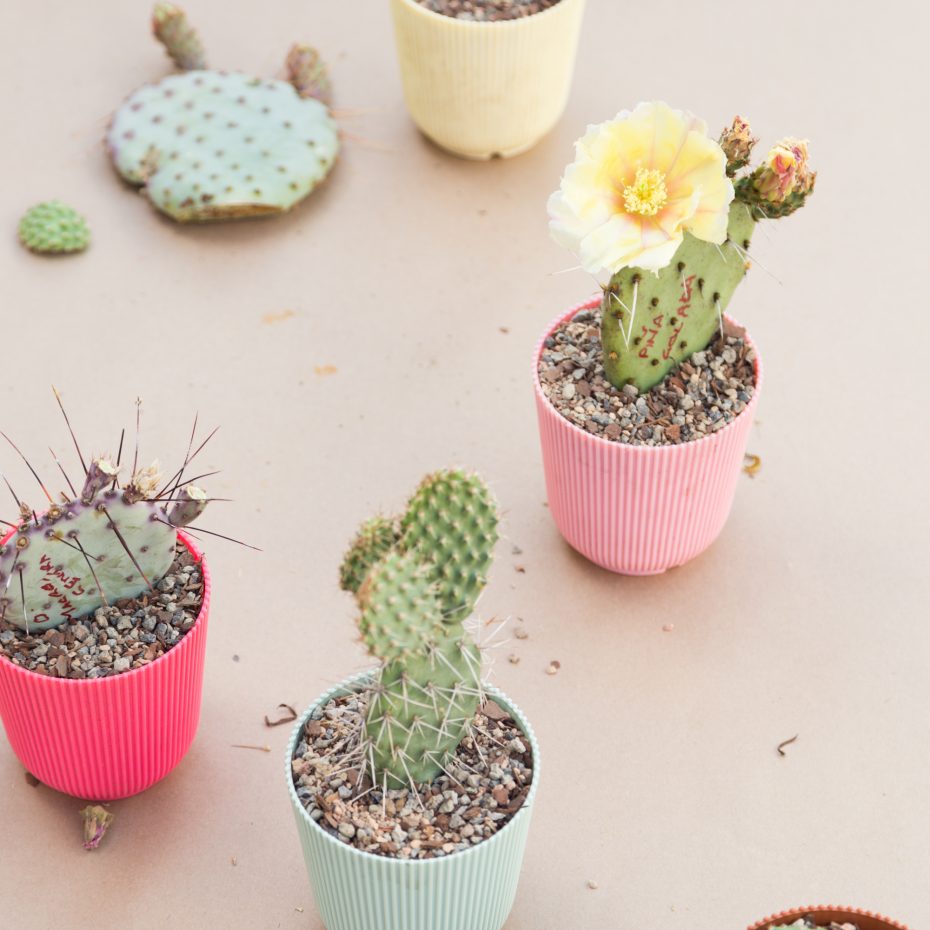
The next consideration is the material your pot is made of. Some common pot materials include ceramic, plastic, wood, metal and glass. So which material is best? It depends on the location of your arrangement and what your long term goals are. Don't worry, it's not that tricky to figure out!
Plastic
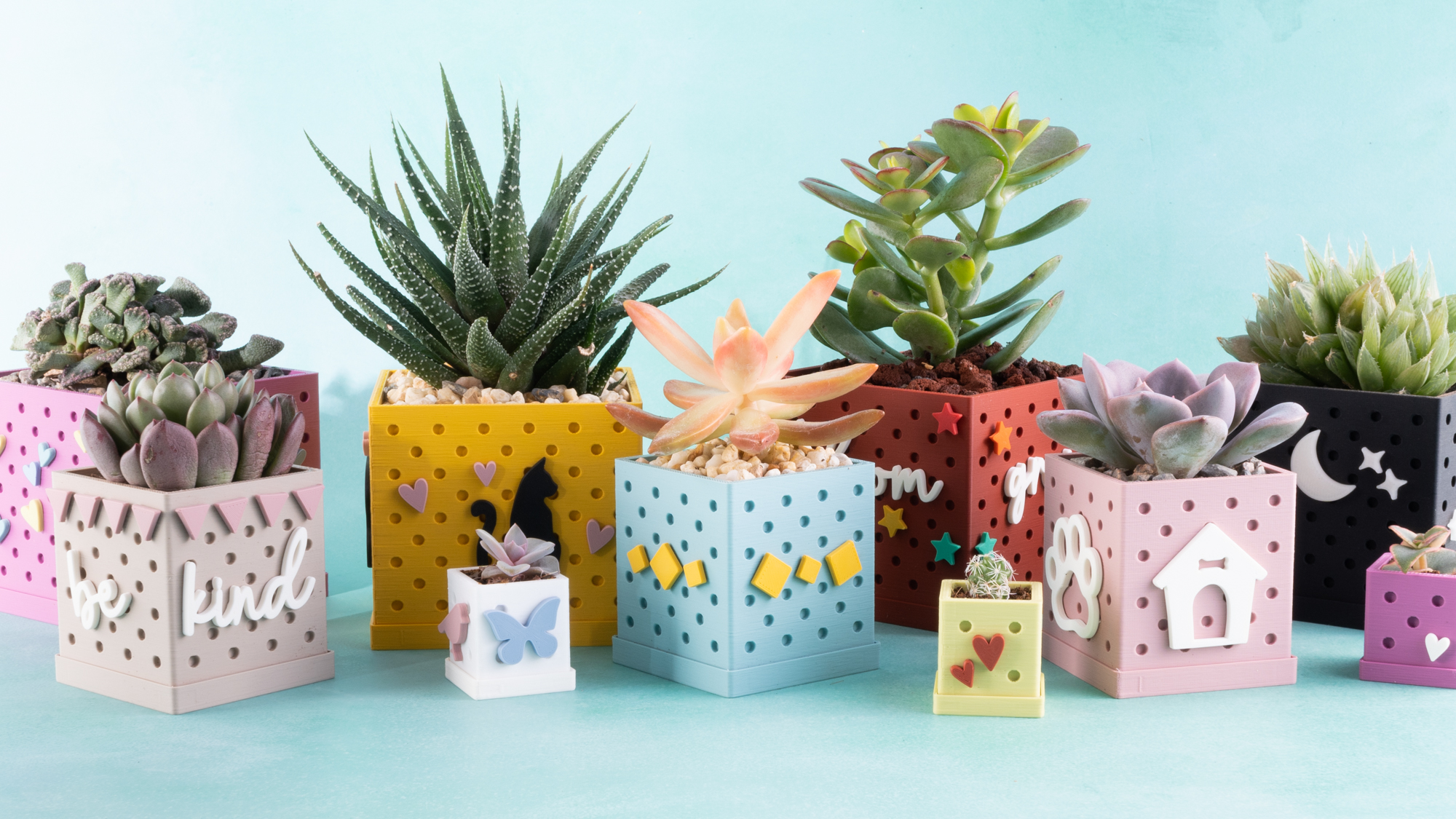
Plastic planters, like the Snappy Pots featured here, are another popular option for succulents. A huge advantage to plastic is that it's not as fragile as ceramic and is often a lot lighter. The downside is that it isn't as breathable as terra cotta or ceramic. It's much harder for water to evaporate in plastic pots than pots made from other materials.
But if you use a well-draining soil and have a drainage hole in your pot, this lack of breathability shouldn't be an issue. Plastic planters come in a huge variety of colors and shapes which makes them really fun to shop for.
Metal
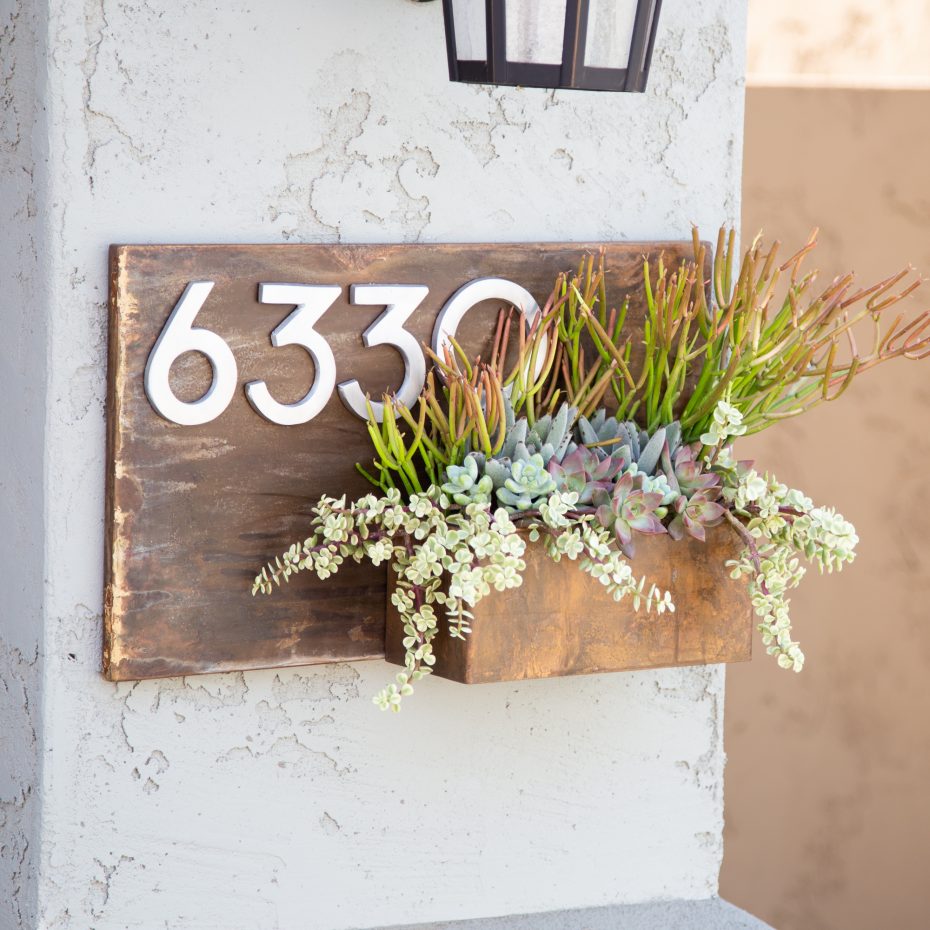
Metal is typically not a great long term choice for planting succulents. You can use it–but be aware that it changes temperatures quickly, which can cause the soil to heat up too much.
Also, unless you use a metal pot that's specifically designed for planting, it will eventually rust, which isn't healthy for succulents. If you decide to go with a metal container, it's best to plan on moving your succulents to a new container after a while.
Terra Cotta or Ceramic
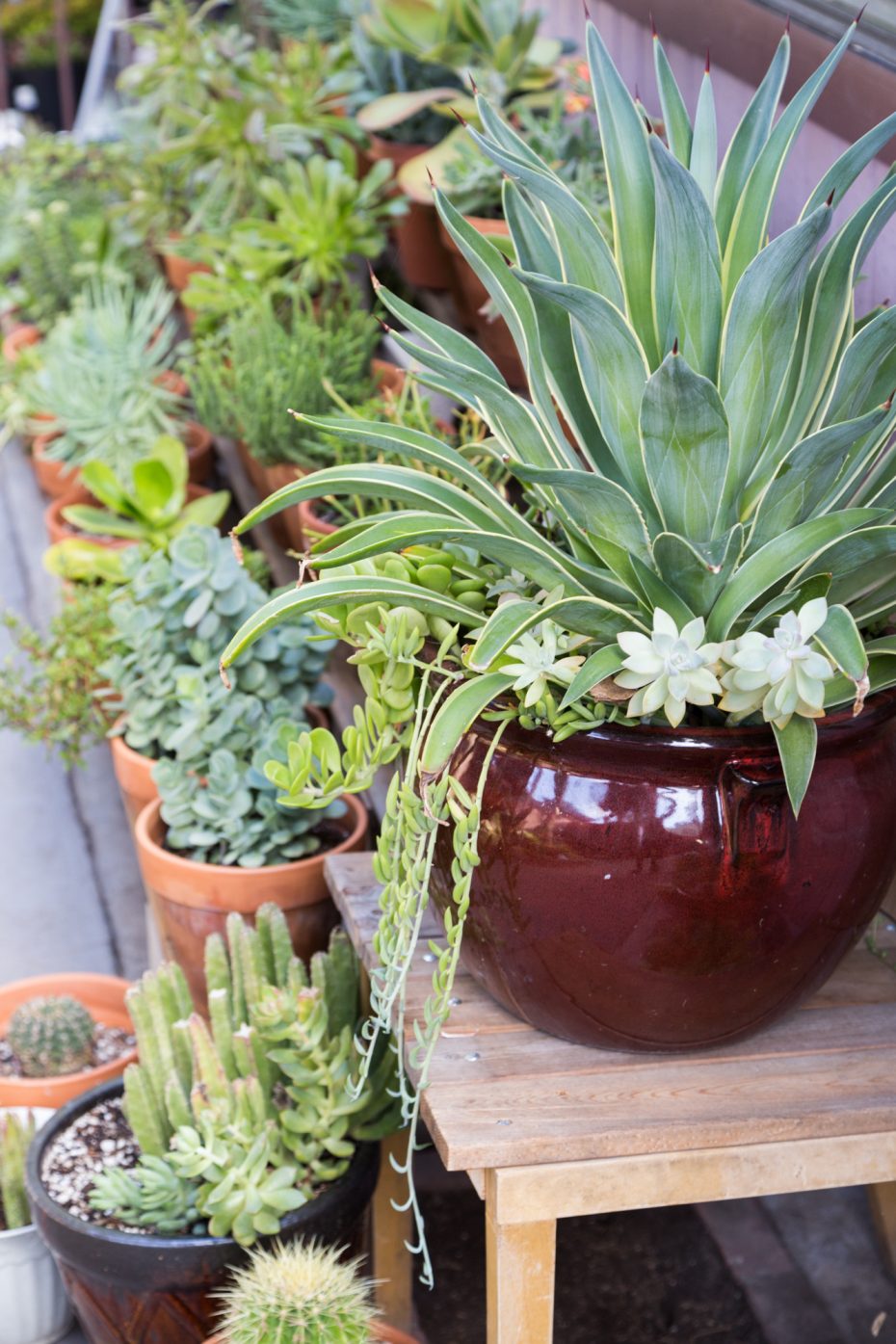
Terra cotta and ceramic are both fairly breathable materials, which means they'll work well in areas that might not get a lot of air flow. In fact, I've found they work well indoors as well as outdoors.
In direct sunlight, a terra cotta or ceramic pot can heat up–which isn't ideal for succulents, but usually isn't a huge problem. Keep in mind though, that your soil will dry out more quickly if it's left in direct sun.
The hard thing about terra cotta and ceramic pots is they can be extremely heavy. If you choose to grow in a large pot, you may find that it's difficult to move after (and maybe even before) the soil and succulents are in.
These types of pots are also quite fragile so you have to be careful not to drop them or knock them over.
Wood
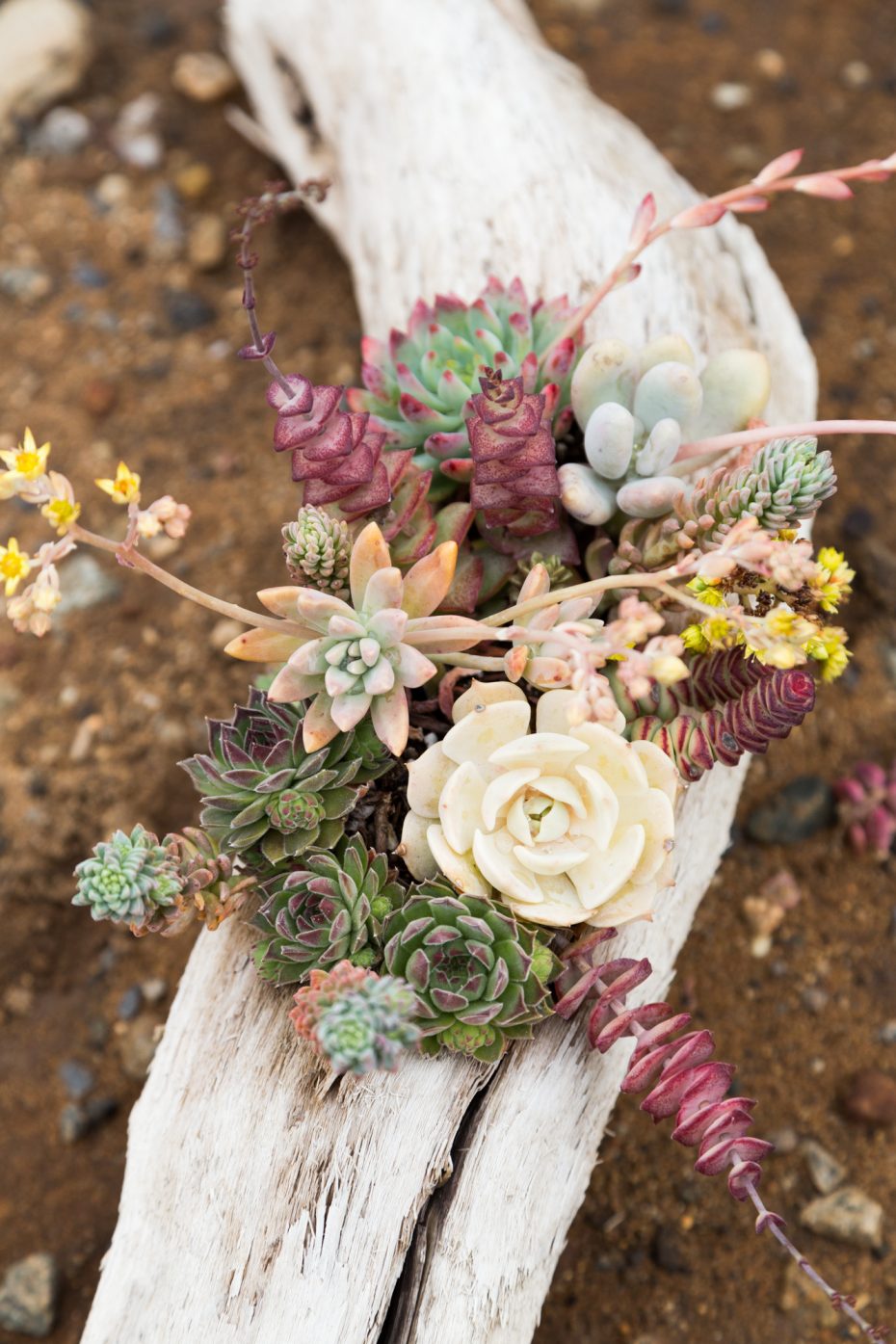
If you're looking for an unusual way to plant your succulents, wood is a really interesting option. I love the driftwood planter I made last summer. It's much more eye-catching than your typical pot or planter.
Plus, wood is helpful for succulents that sit in direct sun or hot environments because it stays cool and retains water.
On the other hand, if you're planting in an area with less sunlight and airflow you may find that wood can easily rot or keep your soil wet for too long. The wood may also break down over time, or split from being watered.
For all these reasons, wood may not last as long as some other materials for pots. But if you choose the right spot for it, wood can look really beautiful!
Glass
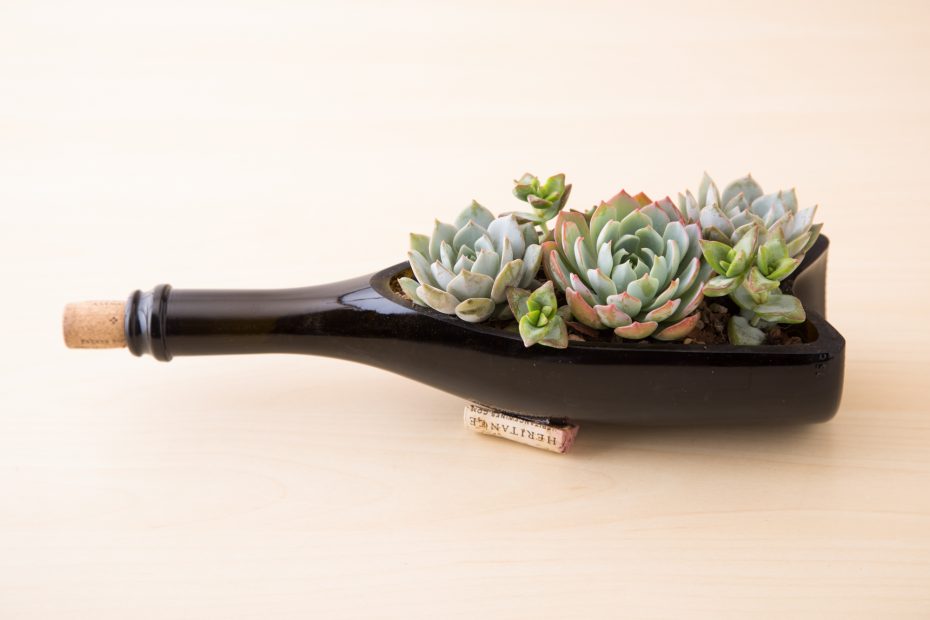
There's no question that glass is a beautiful material to plant your succulents in. However, glass containers usually lack drainage holes (although the wine bottle planter above has one!).
Besides the drainage issue, glass is also not very breathable, which means your soil will have a hard time drying out–unless your container has a wide opening and allows for a lot of airflow.
Glass also gets dirty easily, and has a tendency to collect hard water deposits. And of course, it's also quite breakable, so you have to be careful with where you place your arrangements–especially if, like me, you've got little ones running around your house!
Colors and Textures
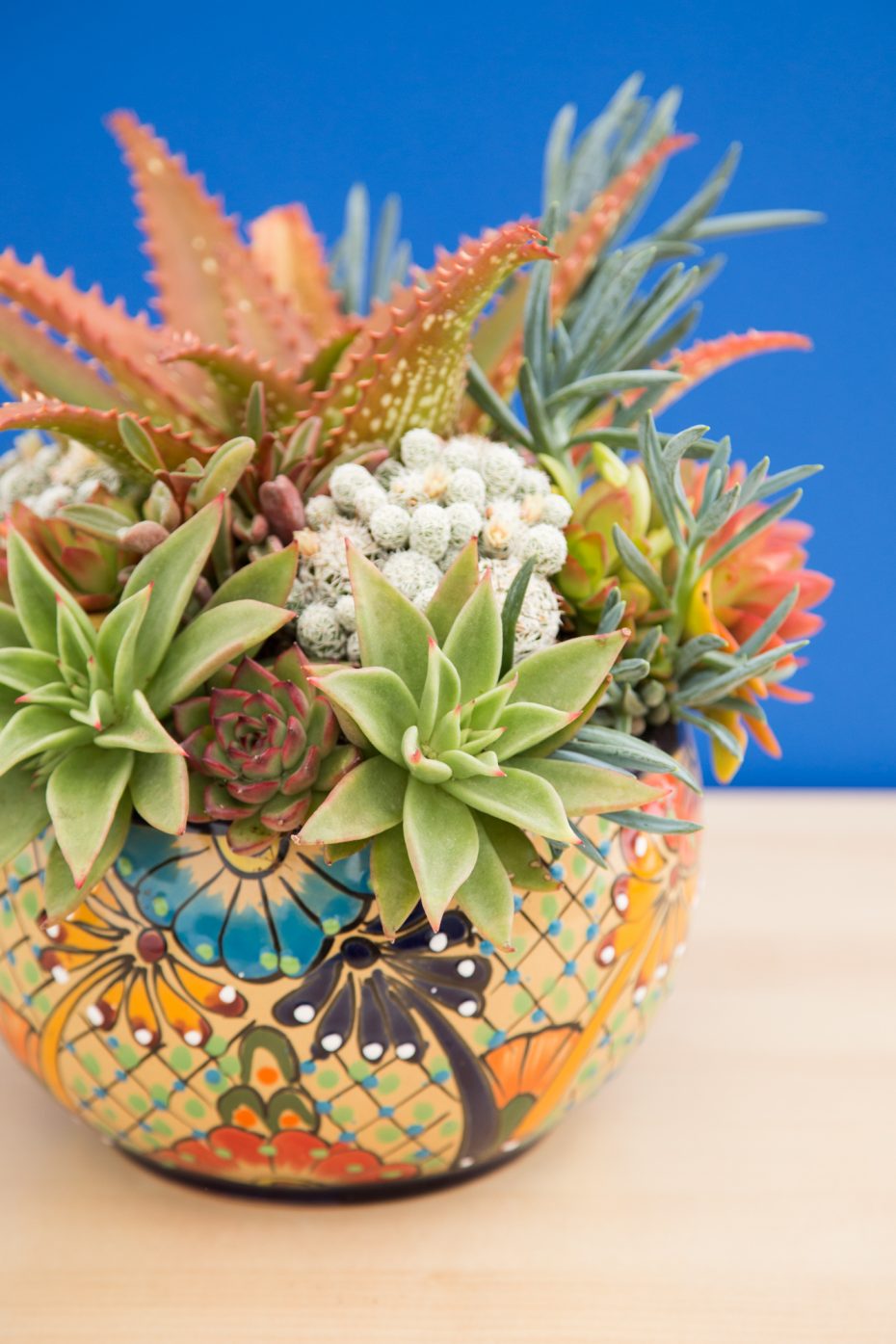
Now that you have a good idea of what materials might work best for your succulent planter, the fun really begins! You can take two different approaches to choosing a planter at this point–choose your pot's color and texture based on the succulents you're working with, or pick your succulents based on the pot you want to use.
Cindy Davison of The Succulent Perch is an expert when it comes to pairing pots and succulents. She puts a lot of thought into choosing succulents whose natural colors will mimic or complement the pot she uses.
In this arrangement, for example, she's filled the pot with succulents that are similar in color and shape to the design on the pot. This helps the arrangement look unified and visually appealing.
Simple is often best
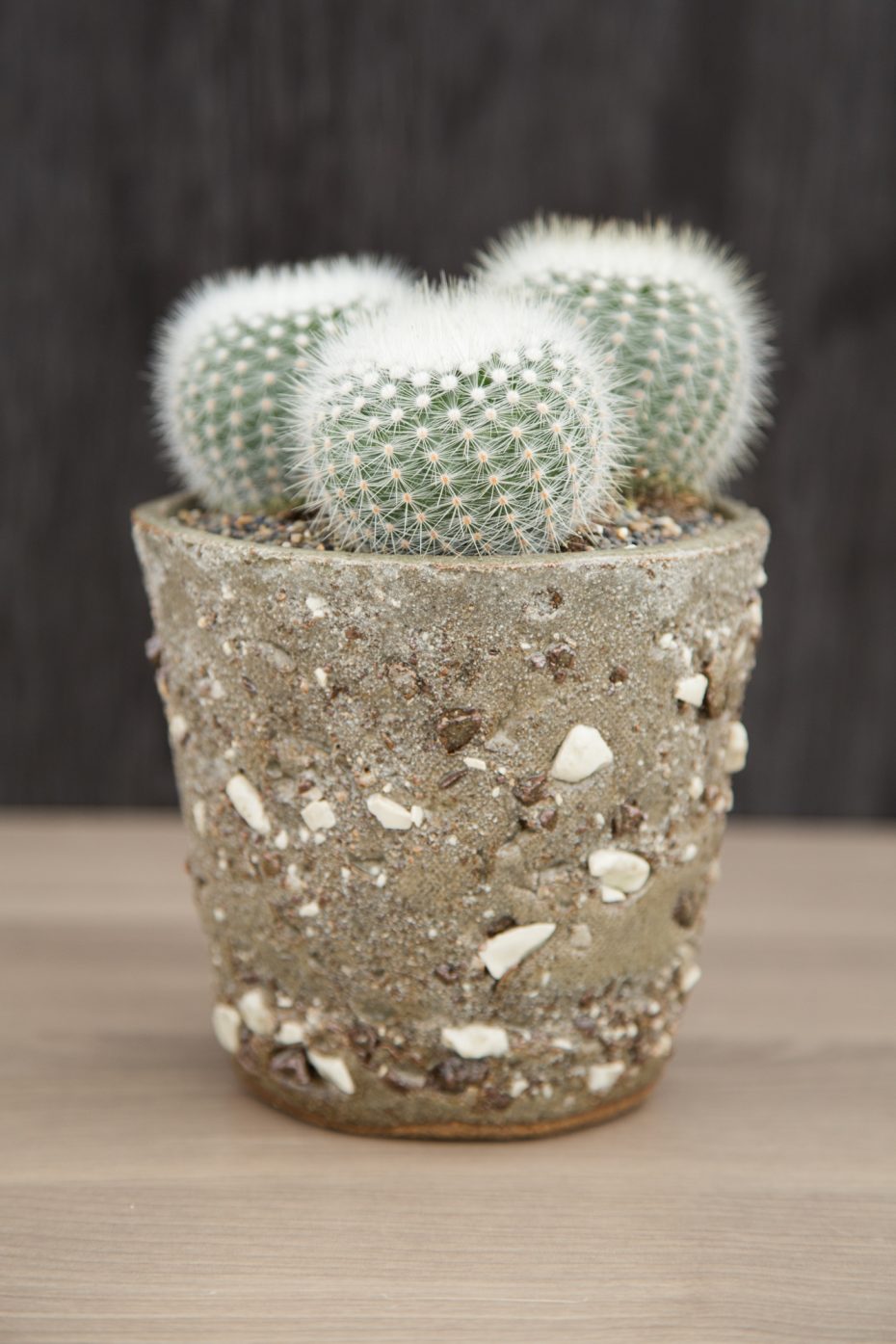
All these choices can get a little overwhelming, I know! If you can't decide what to plant your succulents in, or if you're having a hard time finding just the right pot, a great option is just to fall back on basic terra cotta pots or simple white pottery.
It seems every succulent looks great in one of these and their simplicity helps keep the focus on the succulent.
Size considerations
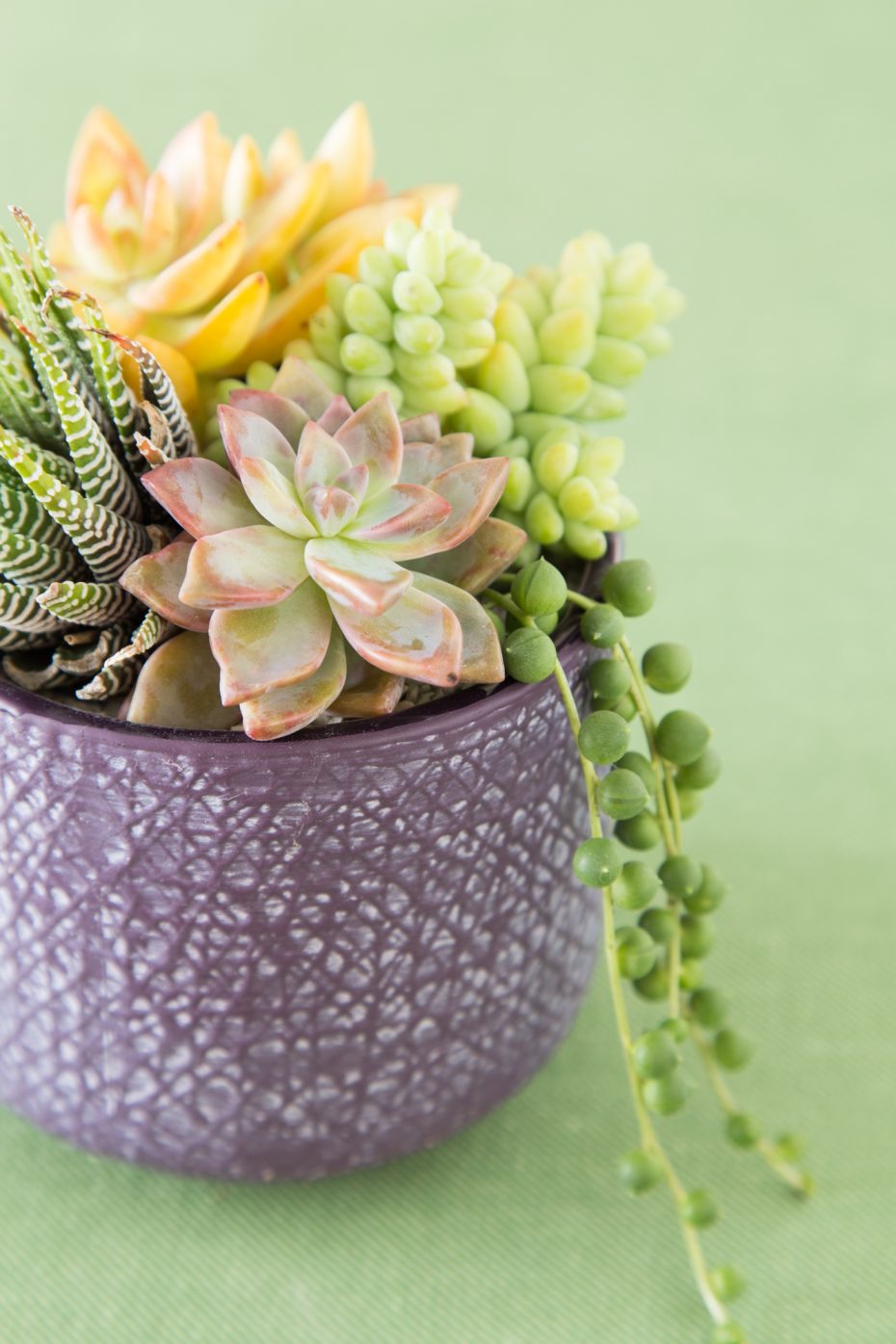
It can often be hard to tell what size of pot you need for your succulents and arrangements. As a general rule, I recommend leaving about a half-inch of space between your succulents and the edge of the pot, so they'll have a little room to spread and grow.
Too much space can actually prevent a succulent from growing much larger, because the roots spread out before the succulent has time to catch up. If you buy a two-inch succulent, a 2.5 inch pot is generally a good choice if you're planting it by itself.
Multiple succulents in one pot
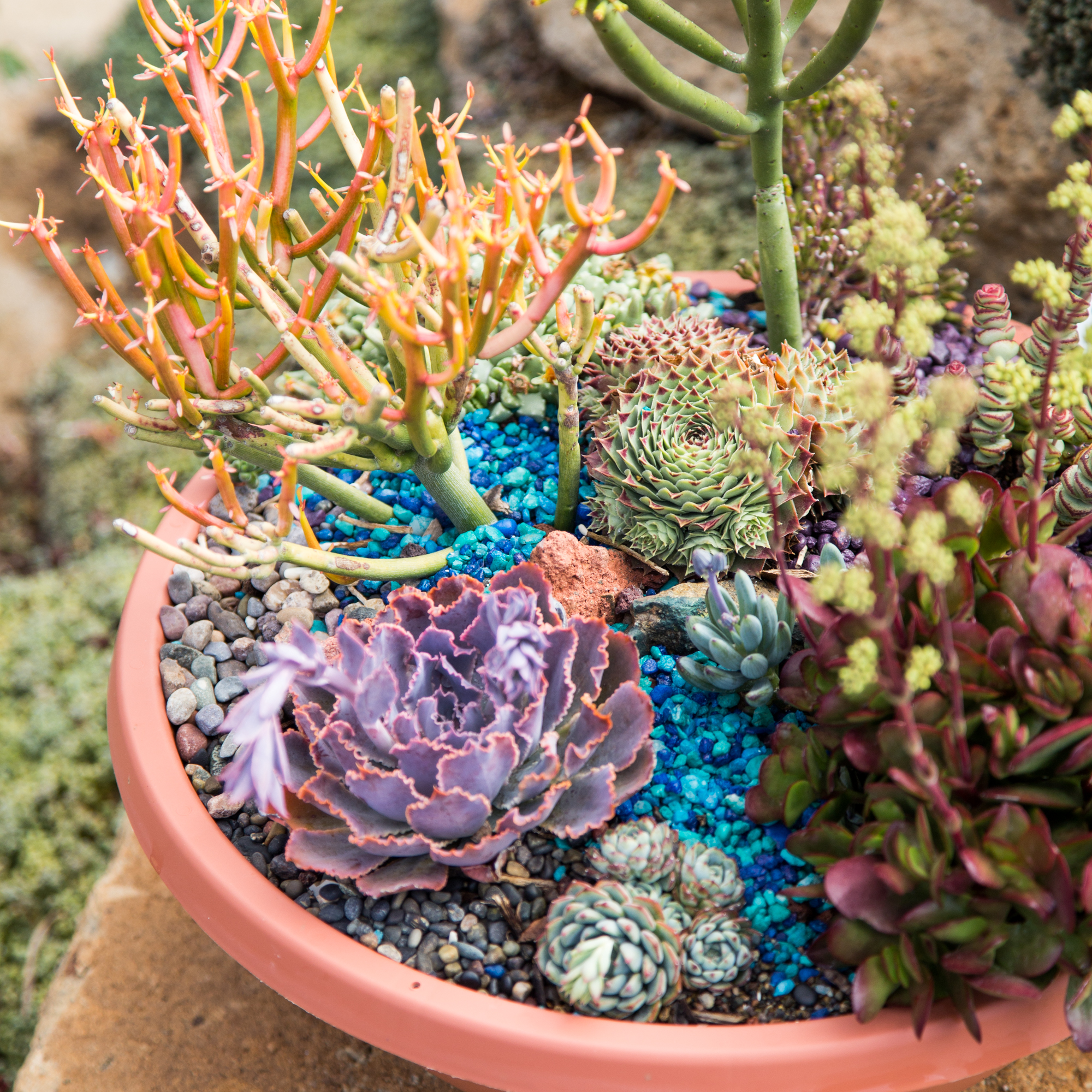
If you're combining a lot of succulents in your arrangement, you'll want to leave a little space around each of them, so they'll have some room to spread out.
If you want your succulents to get larger and spread, give them a little “breathing room” to allow for new growth. Usually, about 1/2″ to 1″ is ideal.
You should now feel more equipped to purchase a new pot for your succulents. While there are a lot of things to consider when choosing a pot, it's still a really fun part of growing succulents.
Once you've selected the right container, it's time to start potting!
Stop the stretching: How to fix one of the most common succulent problems
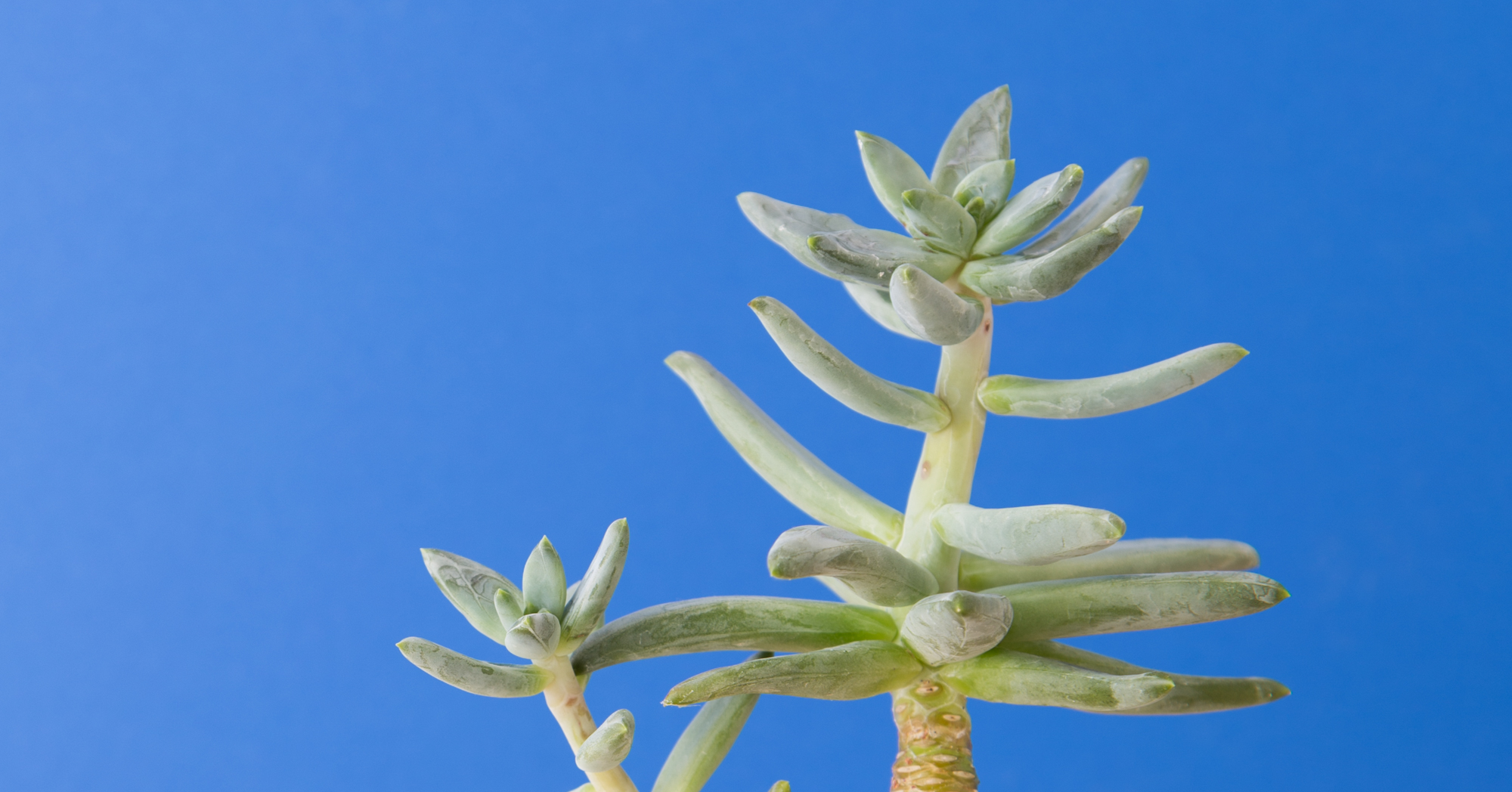
If you're growing succulents inside, you might notice they start to lose their color, get more space between their leaves and begin to look more thin and weak. Succulents that start to get tall like this aren't as healthy as they should be and can eventually end up with more problems. Learn how to stop your succulent from stretching so it can grow healthy and strong.
Don't miss these important tips for planting succulents
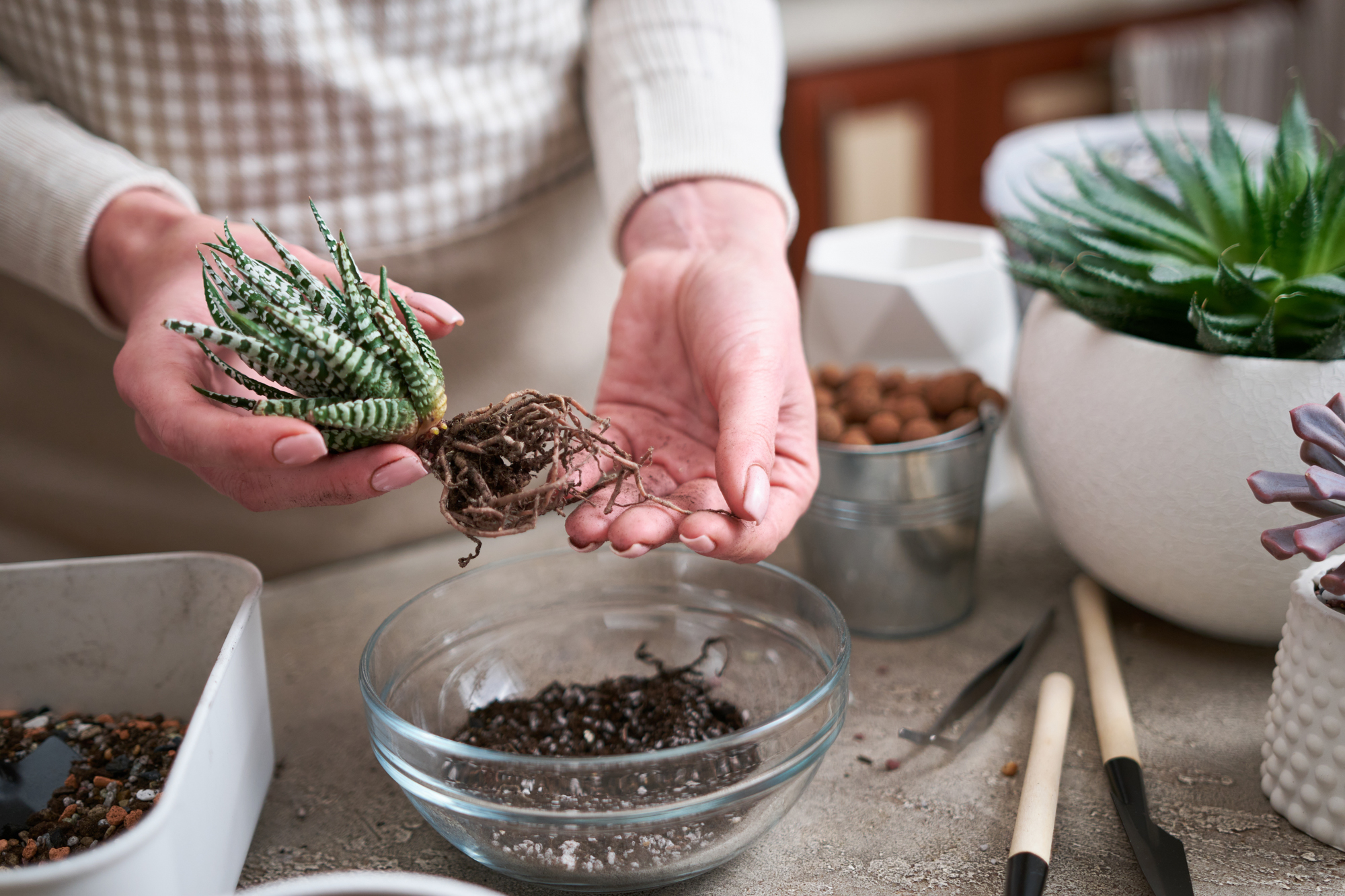
After you purchase a new succulent, it's important that you replant it to ensure it stays live in your home. Taking a few minutes to learn how to plant succulents will start your succulent-growing journey off on the right foot. You'll want to make sure you have the right supplies, including soil and pottery, to give your succulent (and yourself) the best chance at success.
Yes, Your Succulent Is Probably Dying, But Here's What To Do About It
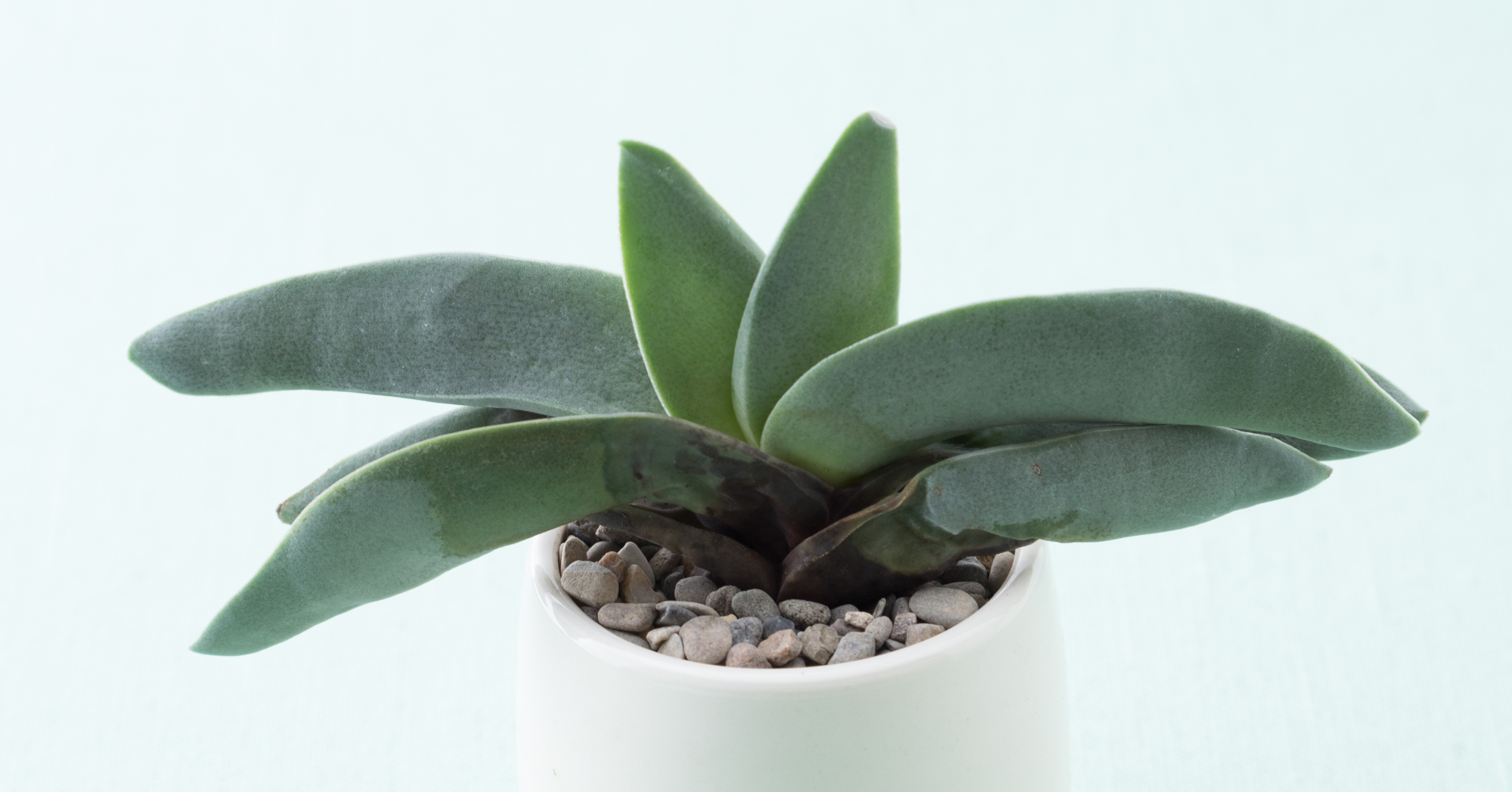
There are a number of reasons your succulent might not be looking great. Find out how to tell what's wrong with your succulent and how you can fix it or prevent it from happening again.
Are These Weird Succulents Too Ugly To Grow In Your Garden?
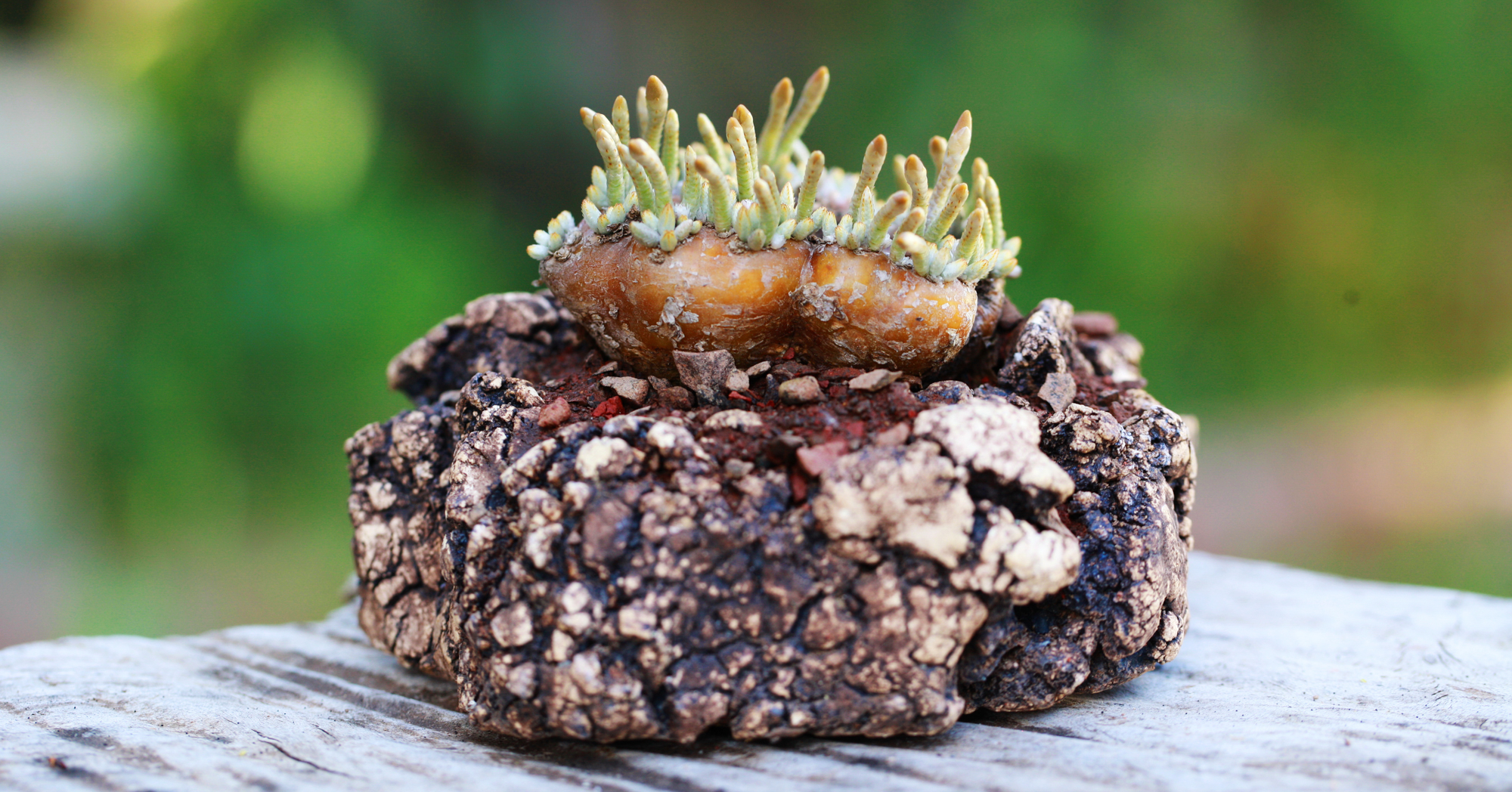
Most people think of succulents as beautiful rosettes with thick, colorful leaves. They're tough and can withstand long periods of drought. But not all succulents are beautiful. This can be a heated discussion, but while many think these weird succulents are cool, others won't even consider buying them. Would you grow any of the ugly succulents on this list?
Save Your Succulents With This Critical Watering Technique And Look Like A Pro
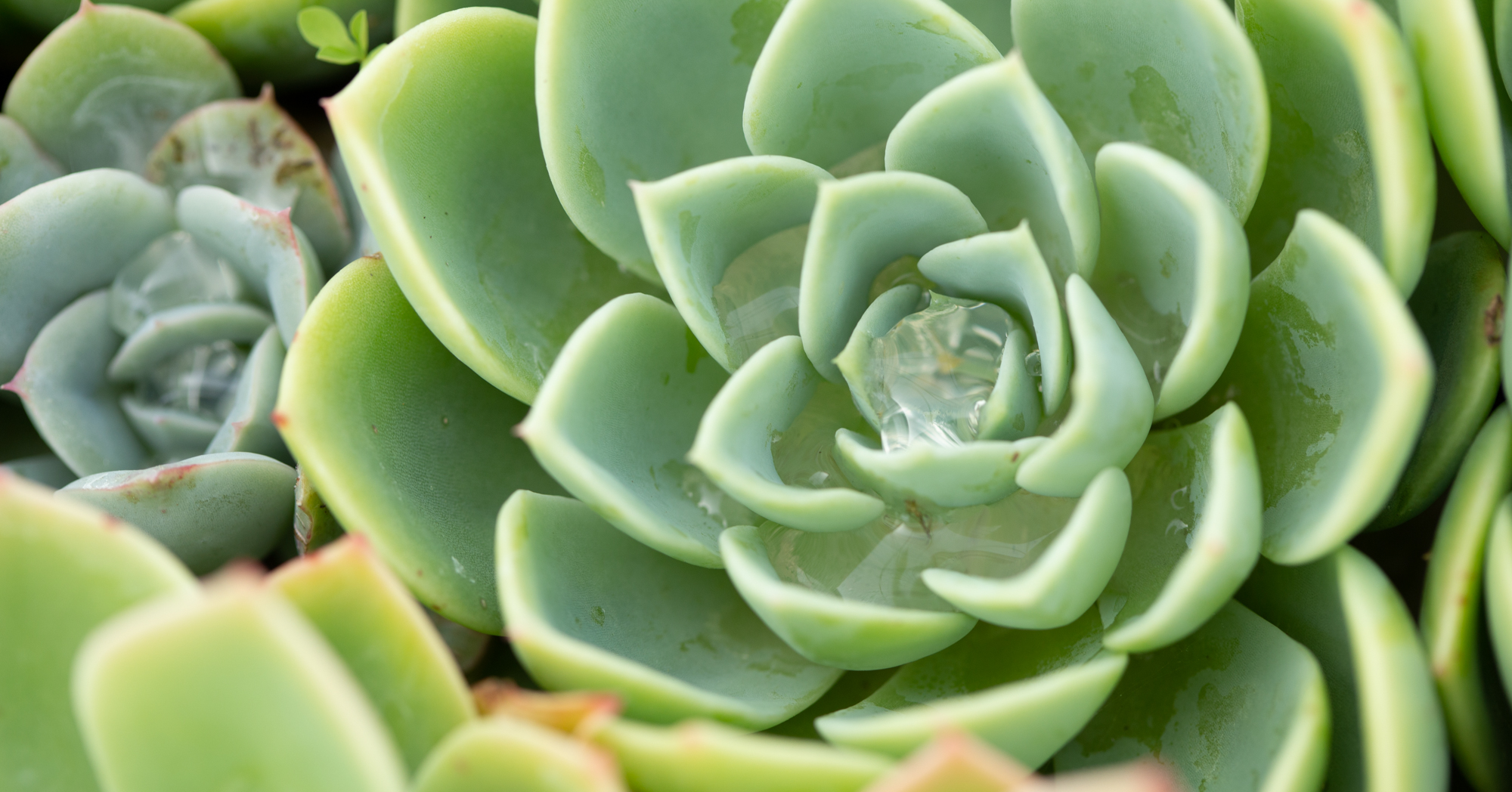
A big part of keeping succulents healthy is providing them with the right environment. You'll want to pay attention to the soil they're in, how much sunlight they're getting, and most importantly, how often you're watering them. The method and frequency of watering succulents are critical to preventing rot while encouraging lots of new growth.
This article originally appeared on Succulents and Sunshine.